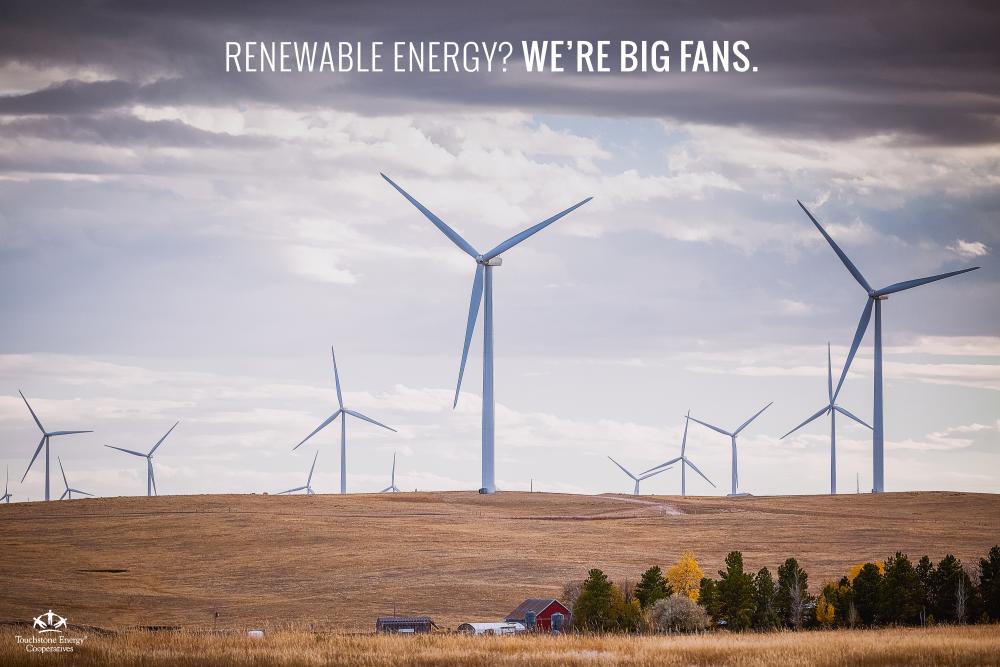The Renewable Energy Served to You

Renewable Energy
22% of the power delivered to HEC members was from renewable resources in 2024.
Since 2011, HEC has assisted members and contractors through the net metering contract process to interconnect over 50 solar sites.
17
Percent Wind Energy to your meter in 2024
5
Percent Hydro Energy to your meter in 2024
619
kW of Interconnected Solar (HEC - 2024)
Generating Power from the Sun

Sun Generation
Modern solar generation systems use silicon-based panels to convert sunlight photons into Direct Current (DC) power. This DC power is fed into Alternating Current (AC) inverters that supply your home or business alongside the power grid.
10
kW per interconnected site
4
Solar Panels per kW
14,010
Estimated Annual kWh Generated by 10 kW Site (PVWatts - 2023 - Fayette)
Clearing Up Some Solar Myths
Solar Facts
1) On-site solar generation does NOT reduce power bills to $0. (Learn more in Q&A below)
2) On-site solar generation without battery backup will NOT prevent power outages or allow consumers to go off-grid. (Learn more in Q&A, below)
50
Member sites with interconnected solar
0
Member power outages prevented by solar
0
Member power bills reduced to $0
Solar Q & A
No. AC inverters used with solar installations are designed to cut power to the grid-connected home or business when grid power is lost. This follows international safety standards to prevent "islanding" of the solar site. Islanding could feed high-voltage power back onto the grid power line, endangering the public and utility workers.
Battery backup + solar sites with the correct inverter and anti-islanding controls are available to disconnect grid power and continue serving solar sites. However, these installations come with far higher price tags and limited battery life-expectancies.
For the typical consumer, a properly installed solar generation system will increase debt-payments and possibly insurance premiums, while decreasing electric utility bills. In particular, the energy (kWh) portion of utility power bills will be decreased. Base service availability charges, however, will remain constant on power bills. Demand charges on power bills are generally not decreased by solar installations.
Service availability charges apply to all power bills, regardless of kWh usage or over-generation. These charges cover part of your cooperative system's infrastructure-upkeep costs to provide continuous power to your home or business. Just like solar panels, grid infrastructure does not last forever.
Historical industry trends point to annual electricity kWh price increases of 2% or less. More importantly, recent industry rate design trends include increasing service availability and demand charges through future years, while flattening and sometimes decreasing kWh charges. Such rate designs tend to promote stability and equity in power bills paid by consumers. However, these trends also increase solar payback times.
Price escalation plays a large role in figuring out whether and when a 20-25 year lifespan solar installation will pay for itself. So, accuracy of annual power bill increase assumptions is very important when evaluating solar.
Missouri's net-metering law allows QUALIFYING member installations to net energy over a billing period. For example, if the member overproduces solar kWh in the middle of sunny days and uses grid kWh during morning and evening hours of the same billing period, the kWh total is netted. The member only pays for the grid power they used minus grid power they overproduced.
If this value is negative (more overgeneration than grid usage), the member's account is credited at a kWh rate equal to the avoided cost of power to the cooperative. That rate is usually around $0.02 per kWh (20-30% of retail). This avoided cost is banked to the member's account and may be used to pay for kWh in the member's higher-usage / lower generation months through the next year. Any credits not used within 12 months expire in accordance with Missouri's Net Metering and Easy Connection Act.
Our members might find these additional links helpful:
Feel free to contact us with questions about solar at your home or business.
